802.11® Wireless Networks The Definitive Guide
Table of Contents
Copyright
Foreword
Preface
Prometheus Untethered: The Possibilities of Wireless LANs
Audience
Overture for Book in Black and White, Opus 2
Conventions Used in This Book
How to Contact Us
Safari Enabled
Acknowledgments
Chapter 1. Introduction to Wireless Networking
Why Wireless?
What Makes Wireless Networks Different
A Network by Any Other Name...
Chapter 2. Overview of 802.11 Networks
IEEE 802 Network Technology Family Tree
802.11 Nomenclature and Design
802.11 Network Operations
Mobility Support
Chapter 3. 802.11 MAC Fundamentals
Challenges for the MAC
MAC Access Modes and Timing
Contention-Based Access Using the DCF
Fragmentation and Reassembly
Frame Format
Encapsulation of Higher-Layer Protocols Within 802.11
Contention-Based Data Service
Frame Processing and Bridging
Chapter 4. 802.11 Framing in Detail
Data Frames
Control Frames
Management Frames
Frame Transmission and Association and Authentication States
Chapter 5. Wired Equivalent Privacy (WEP)
Cryptographic Background to WEP
WEP Cryptographic Operations
Problems with WEP
Dynamic WEP
Chapter 6. User Authentication with 802.1X
The Extensible Authentication Protocol
EAP Methods
802.1X: Network Port Authentication
802.1X on Wireless LANs
Chapter 7. 802.11i: Robust Security Networks, TKIP, and CCMP
The Temporal Key Integrity Protocol (TKIP)
Counter Mode with CBC-MAC (CCMP)
Robust Security Network (RSN) Operations
Chapter 8. Management Operations
Management Architecture
Scanning
Authentication
Preauthentication
Association
Power Conservation
Timer Synchronization
Spectrum Management
Chapter 9. Contention-Free Service with the PCF
Contention-Free Access Using the PCF
Detailed PCF Framing
Power Management and the PCF
Chapter 10. Physical Layer Overview
Physical-Layer Architecture
The Radio Link
RF Propagation with 802.11
RF Engineering for 802.11
Chapter 11. The Frequency-Hopping (FH) PHY
Frequency-Hopping Transmission
Gaussian Frequency Shift Keying (GFSK)
FH PHY Convergence Procedure (PLCP)
Frequency-Hopping PMD Sublayer
Characteristics of the FH PHY
Chapter 12. The Direct Sequence PHYs: DSSS and HR/DSSS (802.11b)
Direct Sequence Transmission
Differential Phase Shift Keying (DPSK)
The
Complementary Code Keying
High Rate Direct Sequence PHY
Chapter 13. 802.11a and 802.11j: 5-GHz OFDM PHY
Orthogonal Frequency Division Multiplexing (OFDM)
OFDM as Applied by 802.11a
OFDM PLCP
OFDM PMD
Characteristics of the OFDM PHY
Chapter 14. 802.11g: The Extended-Rate PHY (ERP)
802.11g Components
ERP Physical Layer Convergence (PLCP)
ERP Physical Medium Dependent (PMD) Layer
Chapter 15. A Peek Ahead at 802.11n: MIMO-OFDM
Common Features
WWiSE
TGnSync
Comparison and Conclusions
Chapter 16. 802.11 Hardware
General Structure of an 802.11 Interface
Implementation-Specific Behavior
Reading the Specification Sheet
Chapter 17. Using 802.11 on Windows
Windows XP
Windows 2000
Windows Computer Authentication
Chapter 18. 802.11 on the Macintosh
The AirPort Extreme Card
802.1X on the AirPort
Chapter 19. Using 802.11 on Linux
PCMCIA Support on Linux
Linux Wireless Extensions and Tools
Agere (Lucent) Orinoco
Atheros-Based cards and MADwifi
802.1X on Linux with xsupplicant
Chapter 20. Using 802.11 Access Points
General Functions of an Access Point
Power over Ethernet (PoE)
Selecting Access Points
Cisco 1200 Access Point
Apple AirPort
Chapter 21. Logical Wireless Network Architecture
Evaluating a Logical Architecture
Topology Examples
Choosing Your Logical Architecture
Chapter 22. Security Architecture
Security Definition and Analysis
Authentication and Access Control
Ensuring Secrecy Through Encryption
Selecting Security Protocols
Rogue Access Points
Chapter 23. Site Planning and Project Management
Project Planning and Requirements
Network Requirements
Physical Layer Selection and Design
Planning Access-Point Placement
Using Antennas to Tailor Coverage
Chapter 24. 802.11 Network Analysis
Network Analyzers
Ethereal
802.11 Network Analysis Checklist
Other Tools
Chapter 25. 802.11 Performance Tuning
802.11 Performance Calculations
Improving Performance
Tunable 802.11 Parameters
Chapter 26. Conclusions and Predictions
Standards Work
Current Trends in Wireless Networking
The End
glossary
About the Author
Colophon
Index
SYMBOL
A
B
C
D
E
F
G
H
I
J
K
L
M
N
O
P
Q
R
S
T
U
V
W
X
Y
Z
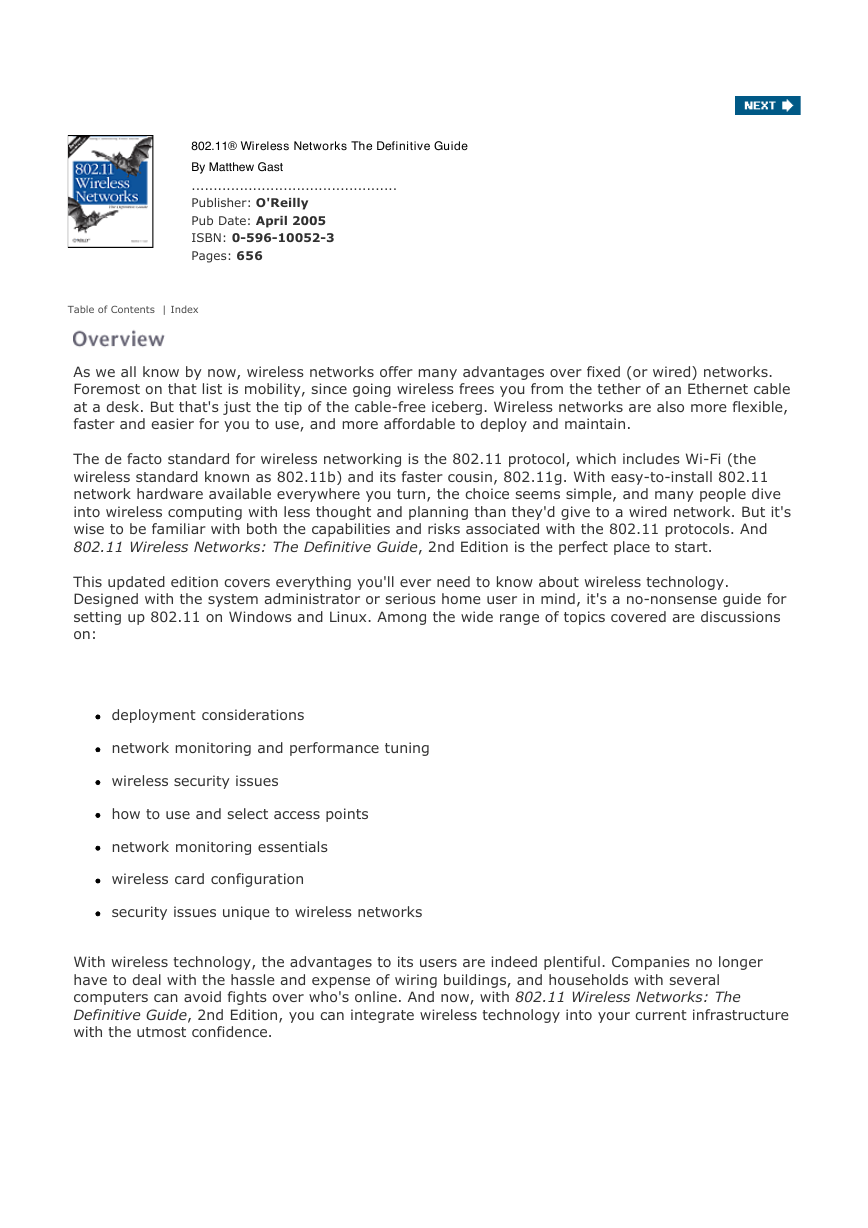

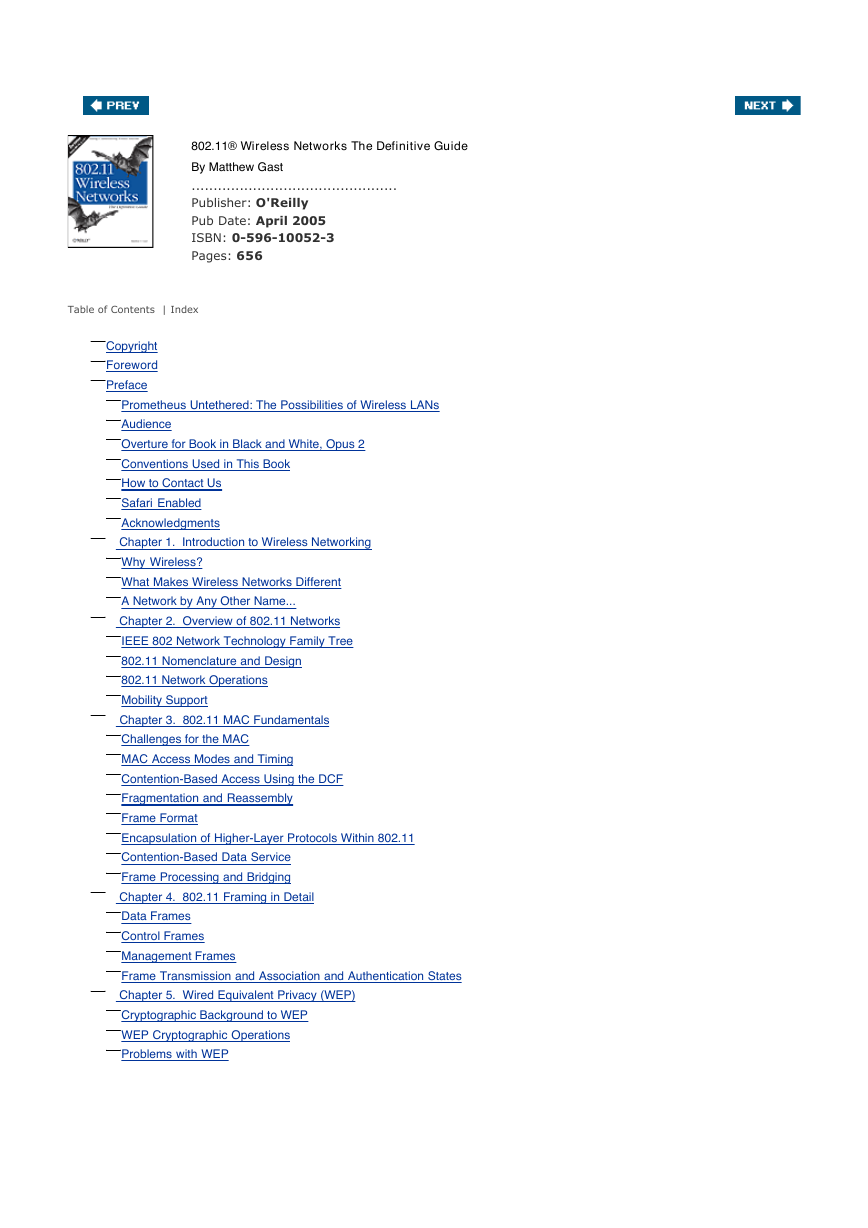
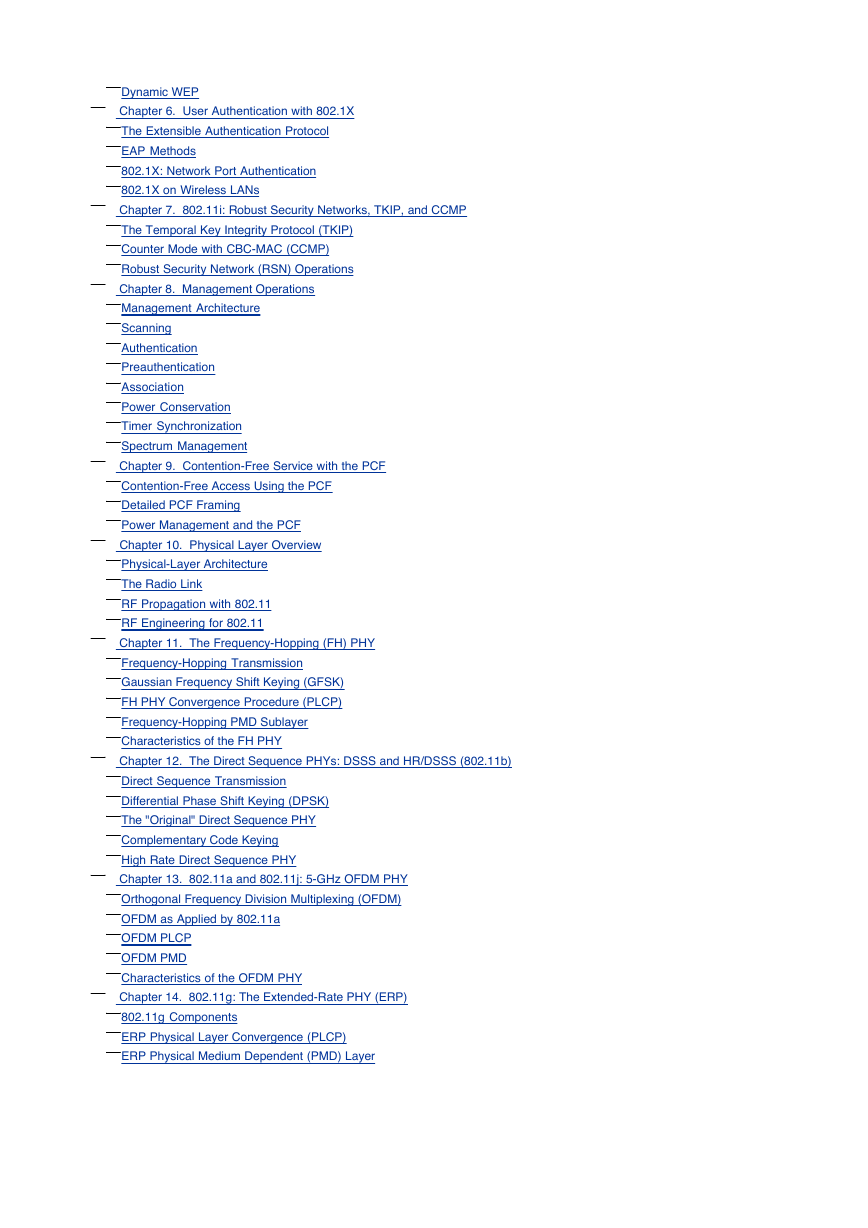
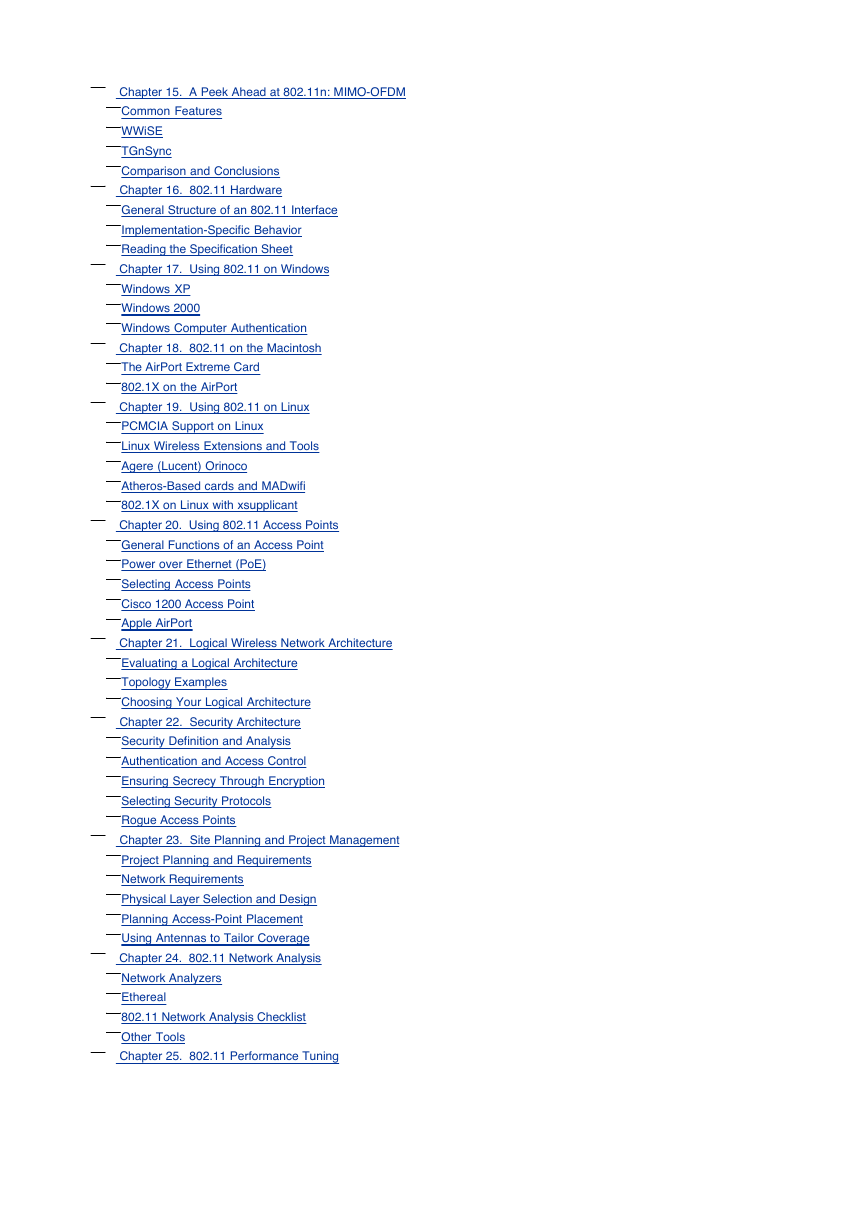

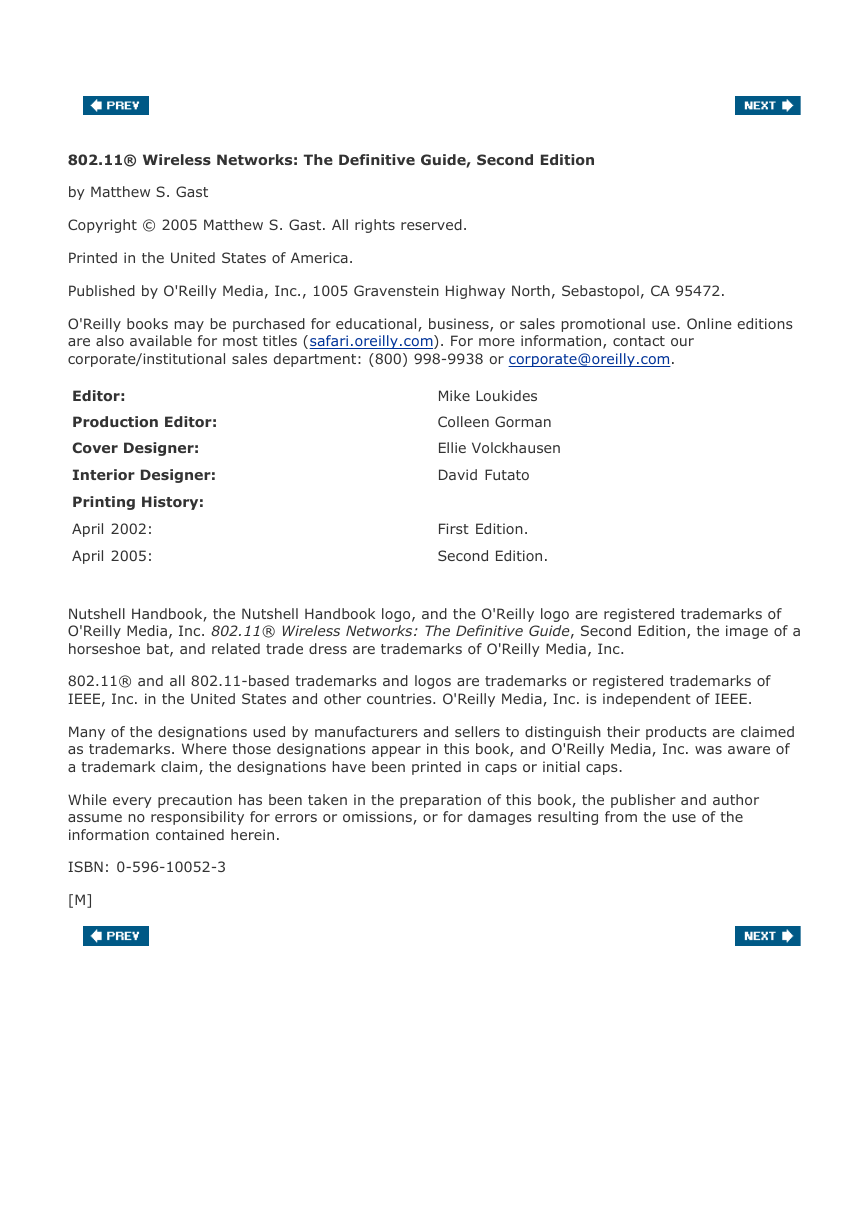
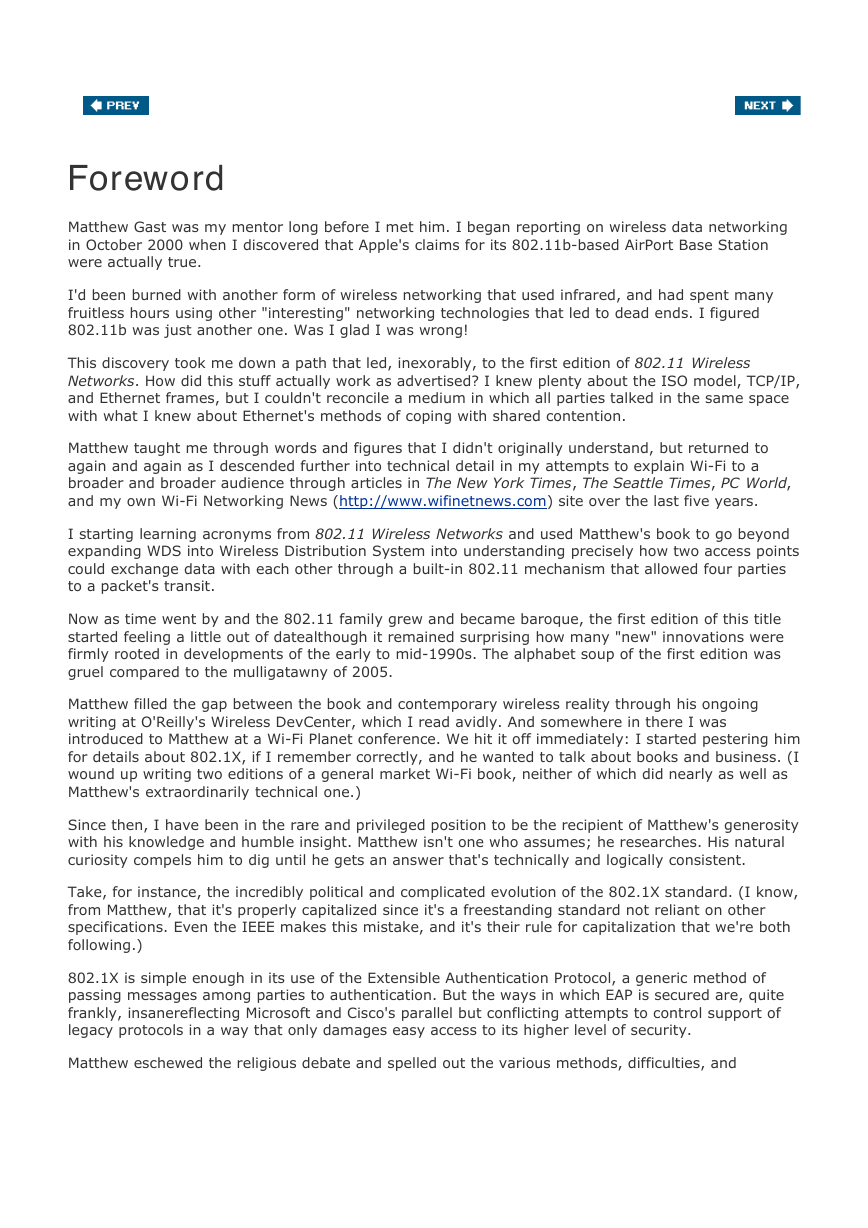








 2023年江西萍乡中考道德与法治真题及答案.doc
2023年江西萍乡中考道德与法治真题及答案.doc 2012年重庆南川中考生物真题及答案.doc
2012年重庆南川中考生物真题及答案.doc 2013年江西师范大学地理学综合及文艺理论基础考研真题.doc
2013年江西师范大学地理学综合及文艺理论基础考研真题.doc 2020年四川甘孜小升初语文真题及答案I卷.doc
2020年四川甘孜小升初语文真题及答案I卷.doc 2020年注册岩土工程师专业基础考试真题及答案.doc
2020年注册岩土工程师专业基础考试真题及答案.doc 2023-2024学年福建省厦门市九年级上学期数学月考试题及答案.doc
2023-2024学年福建省厦门市九年级上学期数学月考试题及答案.doc 2021-2022学年辽宁省沈阳市大东区九年级上学期语文期末试题及答案.doc
2021-2022学年辽宁省沈阳市大东区九年级上学期语文期末试题及答案.doc 2022-2023学年北京东城区初三第一学期物理期末试卷及答案.doc
2022-2023学年北京东城区初三第一学期物理期末试卷及答案.doc 2018上半年江西教师资格初中地理学科知识与教学能力真题及答案.doc
2018上半年江西教师资格初中地理学科知识与教学能力真题及答案.doc 2012年河北国家公务员申论考试真题及答案-省级.doc
2012年河北国家公务员申论考试真题及答案-省级.doc 2020-2021学年江苏省扬州市江都区邵樊片九年级上学期数学第一次质量检测试题及答案.doc
2020-2021学年江苏省扬州市江都区邵樊片九年级上学期数学第一次质量检测试题及答案.doc 2022下半年黑龙江教师资格证中学综合素质真题及答案.doc
2022下半年黑龙江教师资格证中学综合素质真题及答案.doc